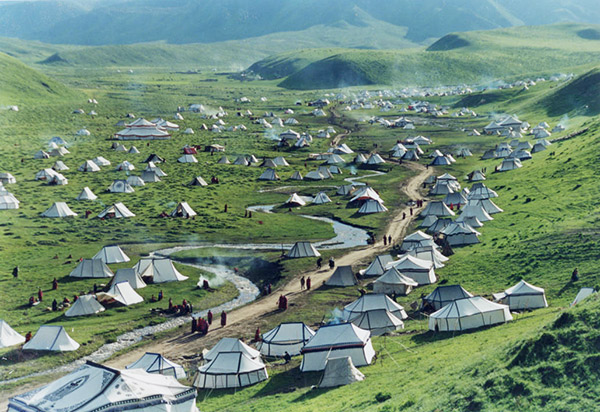New horizon
 |
|
Tents are set up to accommodate visitors to Sangke prairie, a popular tourist destination in the Gannan Tibet autonomous prefecture, Gansu province. [Photo provided to China Daily] |
Tourism grows in a part of Northwest China, driven by people who were once nomads. Xing Yi reports in Luqu, Gansu province.
The houses have been renovated and the rooms cleaned. The plates are heaped with roasted meat and the cups are filled with liquor made from highland barley. Once nomads in the Gannan Tibet autonomous prefecture in Gansu province, the residents of Luqu have now settled down.
During our recent visit, they are seen waiting for guests. The tourist season here is from late June through early September.
Gyakho has hosted some 20 guests this season. His home is about an hour by road from the prefecture's main city, Hezuo. His village Dangyingdao, which is under the administration of Xiahe county, is on the way to Labrang Monastery. When people visit Gannan, they usually go to the monastery, too.
There are hundreds of monasteries in Gannan, but Labrang is the largest and second oldest. First built in 1709, it is among the major monasteries of the Gelug school of Tibetan Buddhism. It is prominent for its teaching system-some 2,500 monks live and study in the monastery.
A cluster of large and small temples, covering 820,000 square meters, houses the monks, from teenagers who are the companions of the young Living Buddhas to those of 90-year-old lamas, says Jampal Gyatso, a monk who has been studying at the monastery for the past 15 years.
Gyakho's home is one of the 30 guesthouses in his village.














